QuestionQUESTION: Hi Tamarah
I am currently doing research in rats related to some sweat glands. The rats only have the sweat glands on their plantar region, so last month I did some surgical procedures on the hind paws of rats and bandaged it firmly. I used no any other containments and the rats were left in their cages. But the very next day, the rats chewed up or by some means tore out all the bandages including the sutures. So the surgery and everything went in vain.
I am looking forward to repeating the experiment, but I couldnot find any suitable technique for post operative protection of the wound and bandages on the paws of the rats. I am thinking of using Elizabethan collar this time. Could you please suggest me any other methods or techniques that I could apply?
Thanks a lot
ANSWER: Hi Pranish,
You've encountered a rodent owner's biggest annoyance - how to protect injuries from infection! Like most animals, the instinct to mess with a wound is really not something you can hinder. Even if it were sealed, and bandages are confusing enough to animals, it would be painful and itchy enough during initial healing and then remodeling to instigate more touching. I'm not sure what the purpose of your experiments are, but consider any effects this discomfort and change in normal behaviors may have on your results.
Elizabethan collars work well on larger animals, but might hinder normal eating and drinking habits in post-op rats, as well as cause a lot of extra stress (which may slow healing). If you have a medication you can provide to counteract discomfort, either locally or systemically, that might curb some of the need to mess with the site, maybe in tandem with another mode of prevention. How invasive is your surgery? If you can find a way to do it with minimal disruption to the tissue, you may be able to avoid the need for external suturing. I know this can be done with some procedures, but I don't know enough about yours to know if it is possible. Large damage to something they will be walking on immediately upon consciousness is inherently going to result in discomfort, chewing, favoring, and lethargy.
Have you spoken with a veterinarian? Some vets in my area will neuter rats. I would assume that procedure involves post-op care of the surgical site. Not being a vet, and only having worked professionally with mice who are rarely operated on while alive, I don't know how they do it, but it might be worth looking for literature or calling someone in your area who works with exotic pets.
I'm interested to know if you can find a solution, so please let me know if this helps get you started and what you find. Hopefully it can help pet owners with injured rats!
-Tam
---------- FOLLOW-UP ----------
QUESTION: Wow Thanks Tam for such quick reply!
I need to operate the hind paws and make a wound of around 6mm size. I need to suture it as I need to place a scaffold over the wound. But I am also unsure of how to protect the wound and scaffold from getting damaged due to the movement of the rats post surgery.
I suppose that the use of Elizabethan collar might restrict the rats from chewing and damaging the bandage and the wound to some extent. But do they really hinder the growth and wound healing of the rats post-op?
And could you please suggest me what kind of medication I can use to counteract discomfort? Unfortunately I have not been able to contact any veterinarian here ( Actually I am in China for my research), and whomever I have talked with have no idea of operating or post operative surgery on the paws. So please help me with some further help and suggestion.
I will let you know about my progress or further queries, Thanks a lot
ANSWER: My big concern with the collar is just restriction of food and water. You may be able to introduce the collar to them before operating to get them to adjust and see if they can keep it on. Yes, stress has a marked effect on healing times (in addition to other factors like hormones, age, and general health), but maybe you can reduce it by employing pain medications and getting them used to the collars in advance. That would be what I tried next, before repeating the experiment. Given what you've told me about the surgery, it definitely sounds like some kind of bandaging will be necessary. If you can't get a collar to work, you might be stuck with some form of sedation for the first day, perhaps? I am not sure of the safety of that in combination with anesthesia in the system.
While looking for information on pain medications (since rats metabolize very differently from mice) I found this extremely helpful and thorough page: http://rattitude.com/articles/information/pain-medication-guide-for-pet-rats-et-
Please let me know if you have trouble viewing it, as the information and sources are extremely valuable in choosing a medication best suited to your purpose. It looks like you have a few great choices, so you should be able to find something which is both available and effective. I would reserve injectable medications to a last resort, however, as many animals can have reactions at injection sites, so oral or in jello might be easier for you.
-Tam
---------- FOLLOW-UP ----------
QUESTION: Thanks Tam for your invaluable time for replying me!
Thats a good idea to put the collars on and get the rats used to it before doing the experiment. I will definitely try and do it before I do the experiment. I am also contemplating of using a co flex to make a mid body wrap so that the rats cant bend enough to reach the wound. The problem is to find out if the collar will hinder them from eating and drinking or not.
Also the movement of the rat (as I am experimenting on the paws) may cause significant damage to the wound. I cant find any other way to limit it. And as far as I know, they dont use medications in an animal experiment, because that may alter the experimentation parameters and results and healing progression. So, I have to think about it and consult with professors.
Thanks a lot, I am still thinking about it and will get back to you as soon as I have any other problem. Cheers! :)
AnswerI'm not sure what a co flex is, but that would be another thing to try out in advance. They are going to look very strange during healing! What part of the experiment is your research studying? Perhaps if you are focused on the results post-wound closure, you could allow a water soluble short-term sedative to get them over the initial hump? I'd be very interested in what your professors have to say, as I'm sure this has come up as a difficulty in some kind of animal research before.
I look forward to hearing how things progress!
-Tam

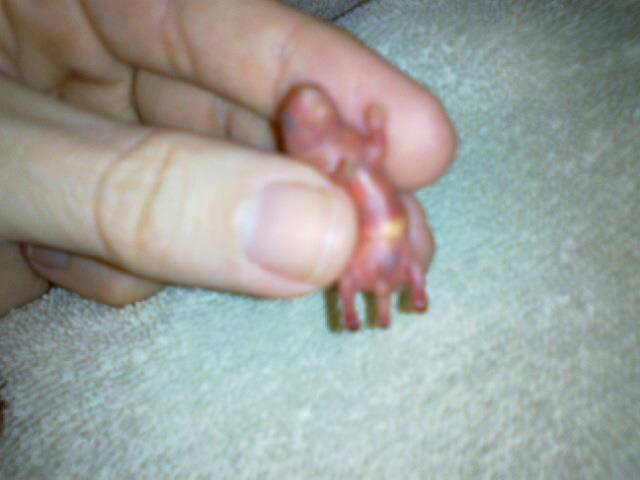 Handicapped mouse pups
Question
BABY MOUSE
I have been breeding mice fo
Handicapped mouse pups
Question
BABY MOUSE
I have been breeding mice fo
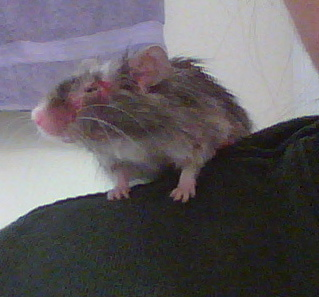 Scratching/OCD/Allergy??
QuestionLunas eye
Lunas back
QUESTION: Hi
Scratching/OCD/Allergy??
QuestionLunas eye
Lunas back
QUESTION: Hi
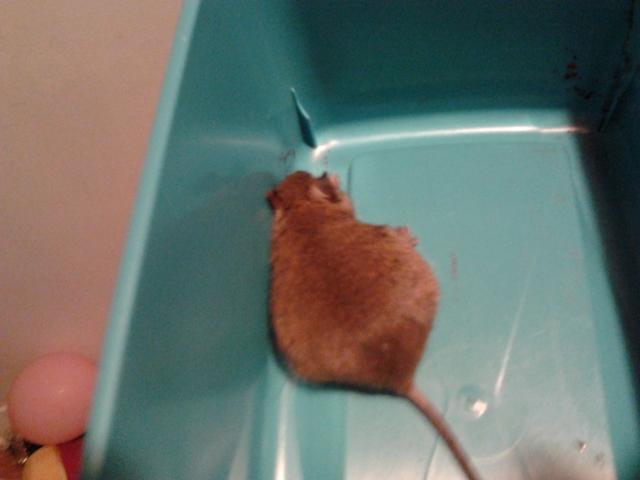 First mouse found
Question
Cinnamon?
Hi Tamarah,
&nb
First mouse found
Question
Cinnamon?
Hi Tamarah,
&nb
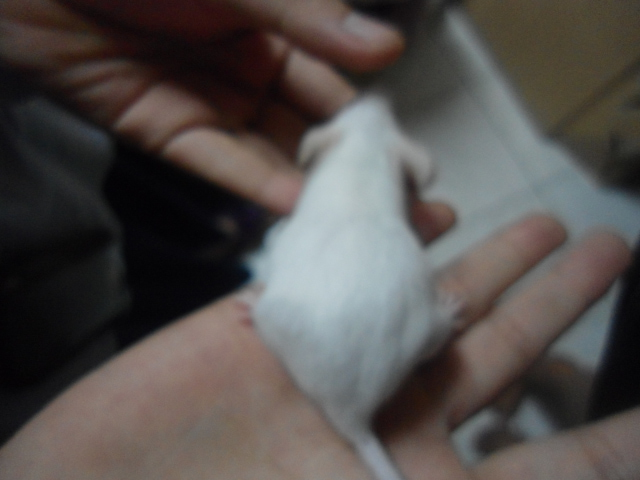 Pregnant mouse/ new babies
QuestionQUESTION: Hello again natasha mice mouse :D
W
Pregnant mouse/ new babies
QuestionQUESTION: Hello again natasha mice mouse :D
W
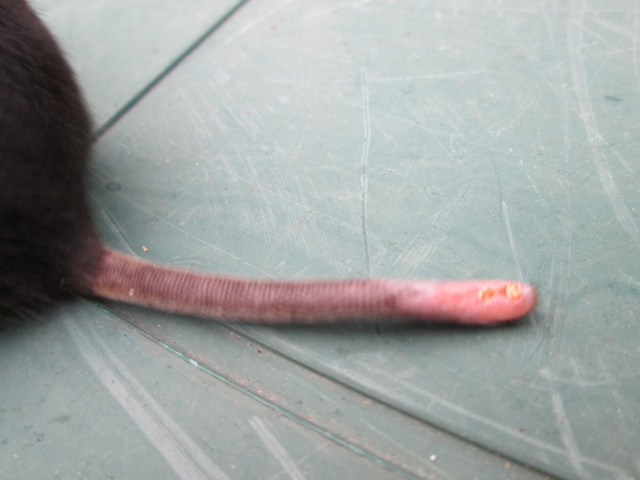 Rescue mouse eating its own tail update
Question
Bandits tail Bandits whole body
H
Rescue mouse eating its own tail update
Question
Bandits tail Bandits whole body
H